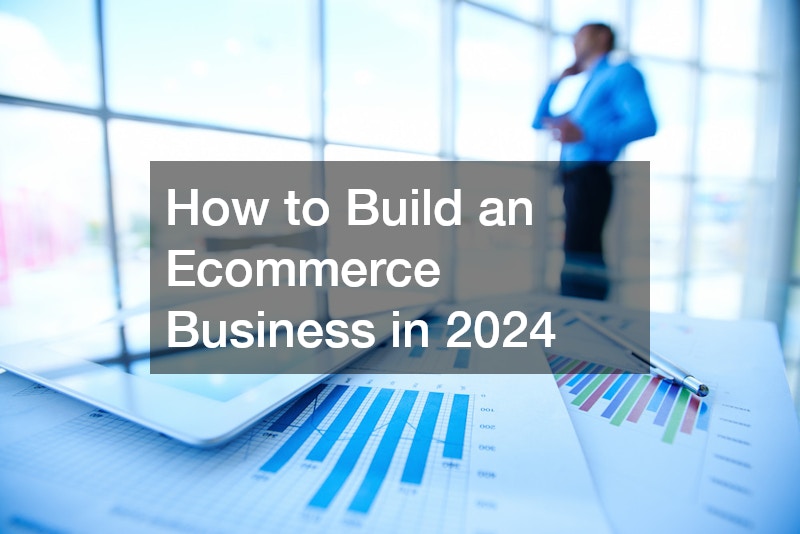How to Build an Ecommerce Business in 2024

Building an ecommerce business in 2024 presents more opportunities than ever before, thanks to technological advancements and an increasingly digital world. With the rise of mobile shopping, seamless payment gateways, and global fulfilment solutions, ecommerce has transformed the retail landscape. However, with great opportunity comes the challenge of navigating a saturated marketplace.
Here’s a guide to building a successful ecommerce business in 2024, from planning to launch and scaling.
1. Identify a Profitable Niche
One of the foundational steps to building a successful ecommerce business is identifying a profitable niche. The ecommerce space is crowded, so you’ll need to carve out a specific area that caters to a particular audience. Ask yourself:
- What are the current trends?
- What problems do people face that aren’t being addressed?
- What products or services are underrepresented?
In 2024, niches related to sustainability, ethical products, and personalized customer experiences are gaining traction. If you choose a niche with less competition and more room for growth, it becomes easier to dominate a segment of the market.
2. Develop a Comprehensive Business Plan
After identifying your niche, the next step is to build a detailed business plan. A well-crafted plan will guide your business through each stage of growth and ensure you stay on course. Your business plan should include:
- Target Audience: Define your buyer personas, including age, gender, occupation, lifestyle, and interests.
- Market Research: Analyze the competition and the demand for your product within your niche.
- Revenue Model: Choose how you will monetize, whether through product sales, subscription models, or a hybrid.
- Operations Plan: Detail how your ecommerce business will run, including inventory management, logistics, and customer service.
3. Choose the Right Ecommerce Platform
In 2024, choosing the right ecommerce platform is a critical decision that can significantly impact your business. The platform you choose will determine how easy it is to build your site, manage your products, and process payments. Popular ecommerce platforms include:
- Shopify: Known for its ease of use and wide range of integrations, Shopify is an excellent option for beginners.
- WooCommerce: If you’re using WordPress for your website, WooCommerce offers customizable ecommerce capabilities.
- BigCommerce: For those who need a platform with robust features for larger operations, BigCommerce is a reliable choice.
Ensure your platform offers mobile optimization, as over half of ecommerce traffic comes from mobile devices.
4. Design a User-Friendly Website
Your ecommerce website is the heart of your business. It’s essential to create a website that is not only visually appealing but also easy to navigate. A well-designed website enhances user experience, encourages repeat visits, and builds trust with customers.
Key features your ecommerce site should have include:
- Fast loading times: A slow website can frustrate customers and lead to abandoned carts.
- Easy navigation: Organize your products into clear categories with a search bar.
- Mobile optimization: Ensure the website looks and functions well on smartphones and tablets.
- Secure payment gateways: Offer secure payment options like PayPal, credit cards, and mobile wallets.
In 2024, immersive features like 3D product views, AR/VR integration, and AI-powered chatbots are becoming more common and can enhance the user experience.
5. Source Quality Products
Once your ecommerce platform and website are set up, it’s time to source your products. Depending on your business model, you can either:
- Manufacture products: If you’re creating a unique product, you’ll need to work with manufacturers or suppliers.
- Dropshipping: This model involves selling products from a third party, which handles shipping and inventory. It eliminates the need for upfront inventory costs but limits control over the fulfillment process.
- Private Labeling: You can purchase generic products and brand them as your own. This model gives you more control than dropshipping but still requires a reliable supplier.
Whatever approach you take, ensure your products meet quality standards, as this will impact your reputation and customer satisfaction.
6. Set Up Logistics and Global Fulfillment Solutions
Efficient logistics are vital to a successful ecommerce business. Customers expect fast, reliable shipping, especially with services like Amazon Prime setting high standards. To meet these expectations, you’ll need to set up a streamlined shipping process, ideally partnering with a global fulfillment solutions centers or third-party logistics (3PL) providers.
In 2024, global fulfillment solutions have become essential for businesses expanding internationally. These solutions allow you to store products in multiple regions worldwide, ensuring faster delivery times and reduced shipping costs. Companies like Amazon FBA, ShipBob, and FedEx Fulfillment offer global networks to help ecommerce businesses scale efficiently across borders.
7. Develop a Marketing Strategy
Marketing is the key to driving traffic to your ecommerce store. In 2024, you’ll need a multi-channel approach to reach potential customers, including:
- Search Engine Optimization (SEO): Optimize your website for search engines to increase organic traffic.
- Social Media Marketing: Platforms like Instagram, TikTok, and Pinterest are powerful tools for promoting products visually.
- Email Marketing: Build an email list and send targeted offers, updates, and personalized recommendations to engage customers.
- Influencer Marketing: Partnering with influencers in your niche can give you instant credibility and access to a broader audience.
- Paid Advertising: Use Google Ads, Facebook Ads, or other PPC advertising to reach potential customers quickly.
Leverage data analytics to track performance and make informed decisions about where to invest your marketing budget.
8. Focus on Customer Service
Excellent customer service can set you apart from competitors. Make sure you offer multiple ways for customers to contact you, such as email, live chat, or phone support. Implement automated solutions, such as chatbots, to provide 24/7 support for basic inquiries. In 2024, customers expect quick responses and easy returns, so invest in tools that enhance the customer experience.
9. Monitor, Adapt, and Scale
Once your ecommerce store is up and running, it’s essential to continually monitor its performance. Use tools like Google Analytics to track website traffic, sales, and customer behavior. Be ready to adapt your strategies based on trends, customer feedback, and new technologies.
To scale your ecommerce business, consider expanding your product range, entering new markets, and optimizing your supply chain. By maintaining a flexible and growth-oriented mindset, you can keep your business thriving in the ever-evolving ecommerce landscape.
Conclusion
Building an ecommerce business in 2024 offers incredible potential, but it also requires careful planning and execution. By identifying a niche, choosing the right platform, setting up efficient logistics, and implementing a multi-channel marketing strategy, you can create a thriving ecommerce business capable of reaching customers around the world. With the right approach, your business can succeed in the competitive world of online retail.
.



